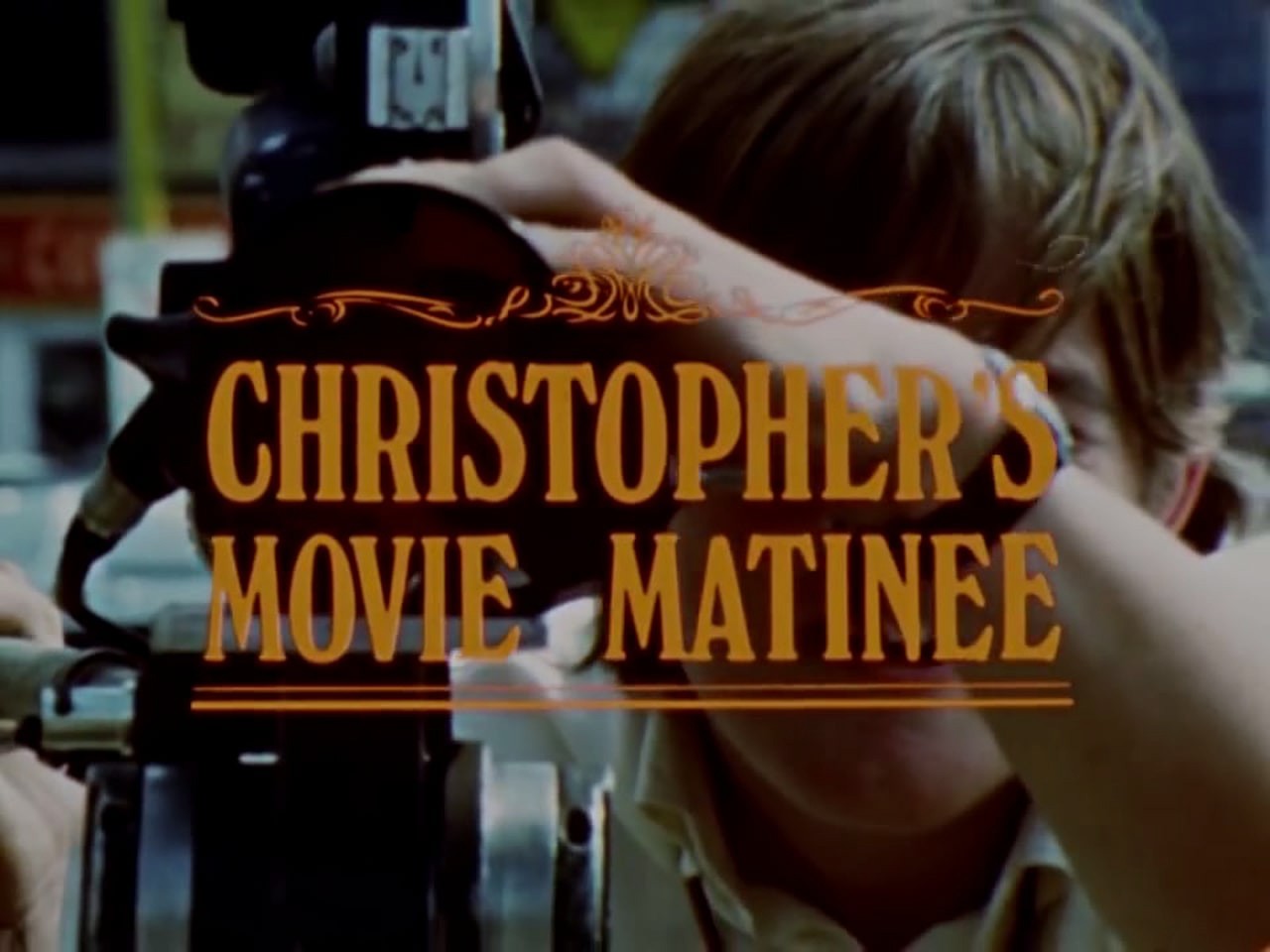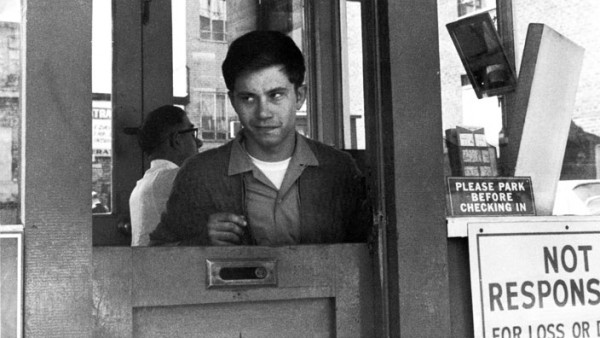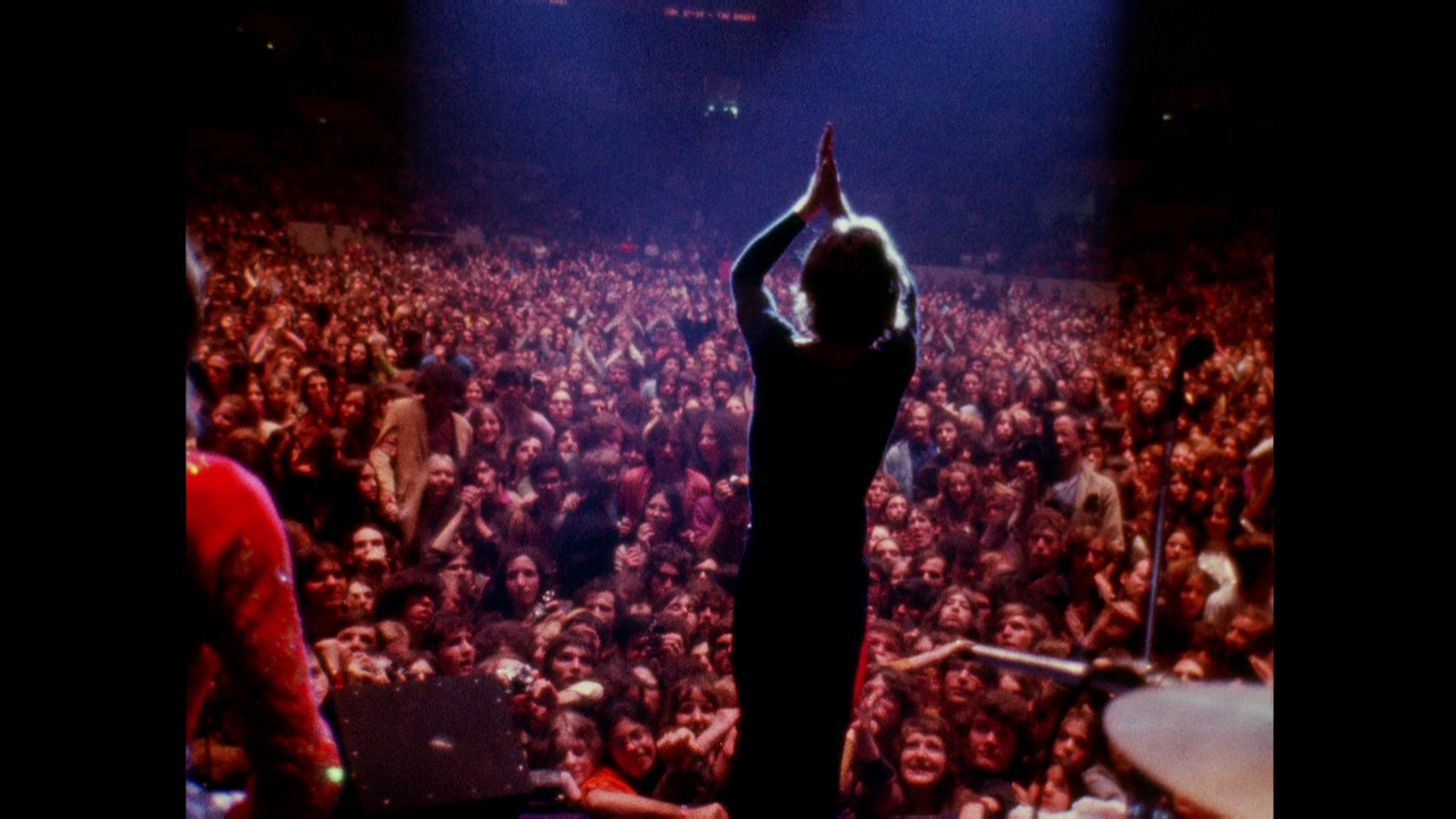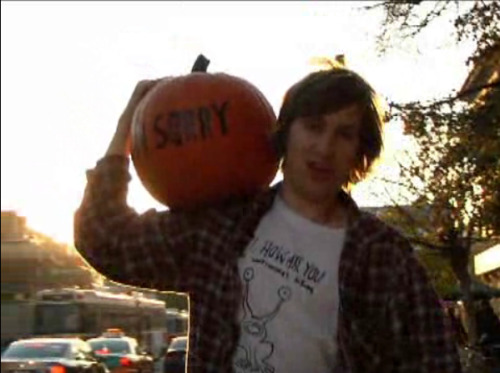There are some consistent
themes that run throughout the work of the Toronto filmmaker Matt Johnson such as
outsiders struggling against the system, megalomania dividing friendships, and
failure as the end result. This raises the questions of what is the political
strategy of focusing on these outcasts? What does it mean to show them in a negative
perspective? And what hope can be interpreted from their failure? Johnson’s
work in web-series and film so far include Nirvana
The Band The Show (2007-2009), The
Dirties (2013), Operation Avalanche (2016)
and an upcoming follow-up to his original show, Nirvanna The Band The Show (now with two ‘n’s).
This
essay, through an analysis of the works, will illustrate how by focusing on people
who are at the margins of middle-class society and by emphasizing their
strangeness, Johnson is reorienting the norms of the dominant culture towards
fantasy narratives that focus on struggle and defeat. These works are
especially compelling in the context of the Canadian state-funded film industry
whose vague idea of its demographics leads it to favor diversity and positive
representations rather than being truthful and entertaining. Johnson’s mixture
of guerrilla filmmaking along with unrestrained textual poaching provides an
example of how society is oversaturated with media and the effects of a
cultural identification with it. Johnson finds a way to work within the system
of relations of dominant 21st century media to then co-opt it through
appropriation and parody to dismantle its power and authority from within.
The Political Strategy of Outsiders
Johnson’s work is
characterized by a youthfulness and delinquency. The characters that populate
his worlds at first try to fit in and adapt to social norms before it leads them
to conflict and rejection. There are the amateur musicians in Nirvana The Band The Show (NTBTS), the
bullied teens in The Dirties and the
audio/visual department of the CIA in Operation
Avalanche who all share a desire to fit in and assimilate but through their
struggles end up being rejected by the social groups and institutions that they
want to be a part of. The main protagonists in all of the works take up the
question of social participation in different ways. Matt and Jay in NTBTS just want to play a show at a
nearby concert venue, Matt and Owen in The
Dirties do not want to get bullied at their high school, and Matt and Owen
in Operation Avalanche want to help
their country the United States win the Space Race (the film is set in 1967).
These characters provide different models of the outsider from that of the
loafer, the psychopath and the idealist. In all three cases, there is a desire
to adapt to the norm which is always crushed and rejected by larger social
forces.
To
use Carl Schmitt’s definition of the political, that of the distinction between
friend and enemy, in NTBTS the Matt
and Jay characters represents loathers, slackers and resistors to the dominant capitalistic
order of social progress and economic growth. Their idleness and scheming defy
a neoliberal pursuit of the common good. The two, who are in their mid-twenties
(perhaps the most suited time for this kind of behavior), do not try to integrate
as they avoid participating in the labor market to instead focus on their
imagination and dreams. The show and Johnson’s work is not that of the politics
of inter-state relations – such as the work of government, social and foreign
policy – but more so that of intra-state. NTBTS
antagonizes the social by privileging the youthful and non-socially useful. If
there is an enemy to the state it is the irresponsibility and recklessness of
these young adults that consistently undermine it.
The
two bands that the show’s title directly alludes to – Nirvana and The Band – might
give a better example of the politics it expresses. Kurt Cobain’s
anti-mainstream sentiments and grunge attitude is one major influence. The
iconic Nirvana song Smells Like Teen
Spirit (1991) appears twice throughout NTBTS:
once over the season’s end credits
and then as the ‘encore’ of their live post-season show at The Rivoli.
Johnson
takes Nirvana’s counter-culture lessons to heart as he plans his own youthful
revolution – what would it look like if the Millennials took over and created
their own institutions? It would have a punk aesthetic absorbed in the popular
culture of the eighties to the present. It would define itself by the
communities of young friends, who were formed in front of screens and in their
parents’ basements, trying to find ways to subvert their upper middle class upbringing.
Alternative music with its melancholy and defiance would offer one remedy. Just
like the Nirvana song, the Matt character in these works struggles with his enthusiasm
and melancholy as they conflict.
While
Ronnie Hawkins from The Band, who appears in episode eight The band of NTBTS,
provides another example. The mixture of old country music with early rock in
The Band’s songs conjures nostalgic images of an earlier world and creates strong
emotional affects that both saddens and uplift. Another example is episode
seven The battle of the bands where the
Smashing Pumpkins song Tonight, Tonight (1995)
plays a big role to set the tone of their characters’ mood while also
anticipating a literal pumpkin smashing scene. Matt also wears a Daniel Johnson
t-shirt in that episode. The reoccurring motif of melancholic musicians is a
symbol of their permanent adolescence and how they are content to rejoice in
their friendship, struggles and failures.
Where
the cinéma vérité style of NTBTS is
closer to the fly-on-the-wall approach of The
Office (2005–2013) and the adventures through urban spaces of Flight of the Conchords (2007–2009), in The Dirties the conflict and filmmaking
in a real high school is closer to Chris Lilley’s Summer Heights High (2007) and the surreal documentary-like footage
of a psychopath in Man Bites Dog
(1992). The Matt character also continues to resemble Kurt Cobain through his grunge
wardrobe and reckless behavior. The
Dirties is the story of two film-obsessed teenagers who plan a revenge plot
to kill the bullies at their high school. The two friends are the happiest when
they are together but as time goes by and Matt seriously wants to follow
through with his plan, Owen (Owen Williams) starts to distance himself from him
and spends more time with his new crush Chrissy (Krista Madison).
The Dirties was a controversial film as it was critiqued as
being irresponsible for not taking seriously its subject and that it might
inspire future school shootings. But what it does instead is create an
expression for youthful concerns that are not usually discussed. The
frightening quality of The Dirties is
that Matt’s problems and alienation are relatable. The Dirties stands out for focusing on the uncomfortable and
dangerous territory of adolescence that tends to get overlooked. It shows the
embarrassment of being bullied at school, games and popular culture as an
escape from reality and the rationalizing of dangerous obsessions. The Dirties shows a darker side of
humanity but presents it unflinchingly. It is effective for showing the problems
of youth and creating empathy for its characters while also being repulsed by what
he does at the end. The uncertainty in the response to the film partly came
from the fact that Johnson also starred in the film, which blurred the line on
whether you were seeing his own thoughts and actions or that of the characters.

In
one scene of The Dirties Matt leaves his
classroom when all of his peers are laughing at the film that he made, though
he keeps looking on through the door window. This scene is described in the
audio commentary as being inspired by an Orson Welles anecdote from one of the F for Fake (1973) DVD special features
where he describes walking out of a The
Magnificent Ambersons (1942) projection just to peek into it from outside
of the room’s door. With The Dirties
Johnson started taking on and including more of film history into his work,
which has only been increasing since. And as a multitalented filmmaker, who
started at a young age and who stars, writes, directs and edits the director
Welles was one of his models. A film like Citizen
Kane (1941) provides a major reference point. Just like how Welles’ first film
antagonized one of the most popular figures in America of his time William
Randolph Hearst. Here Matt takes a sensitive topic and uses it to study the
mind and character of a school shooter but also to get the sensational media
attention and response that goes with addressing a taboo subject.
Just
like how Welles used his film as a form of critique and to spark controversy,
so does Johnson with The Dirties. Similar
to how Welles rooted his film in the real world and blurred non-fiction with
fiction through the newsreel that opens Citizen
Kane, Johnson uses a similar technique by starting The Dirties with documentary footage set in a school on the problem
of bullying. Another filmmaker would also use the same technique. Stanley Kubrick
does this with the Cold War nuclear scare when he made Dr. Strangelove or: How I
Learned to Stop Worrying and Love the Bomb (1964). He took the public fears
of the nuclear conflict between the United States and Soviet Union, and made a
dark comedy on this subject – an air force general becomes paranoid over
subversive Soviet infiltration so he orders the first nuclear strike.
The
end credits of The Dirties anticipate
Operation Avalanche. Within its
compilation of classic opening film credits there are three from the films of
Stanley Kubrick: Dr. Strangelove, 2001: A Space Odyssey (1968) and The Shining (1980). Just like how The Dirties could have been made from a
newspaper headline about a delinquent teen, Operation
Avalanche could have been conceived in online conspiracy forums in the wake
of the The Shining documentary Room 237 (2012). The premise of Operation Avalanche is that since the
Americans could not win the Space Race, they instead arranged for the
audio/visual department of the CIA to find a way to fake it. The two of them Matt
and Owen go visit Kubrick on the set of 2001,
and inspired by his use of front-screen projection, they are able to fabricate
footage of a moon landing. Eventually higher officials at the CIA turn against them,
kill Owen, and Matt has to blackmail them about their corruption to survive. It
is a preposterous story but it fuels the popularity of its conspiracy narrative
and convincingly critiques the power and malleable quality of images and the
coercion of powerful institutions that use them.

Similar
to the film Wag the Dog (1997), about
a film producer that fakes a war to help the American president get re-elected,
Operation Avalanche is about the
power of images to change society, regardless of their authenticity and for
what ends. After being an idealist who wanted to help his country and make a
difference, those in charge started to mistrust Matt and the whole conspiracy
got out of hand. It is Johnson’s most direct and critical film about
institutions and their coercion. After an earlier idealism comes resignation.
And one wonders what his character is going to do next?
Operation Avalanche is also a victory for Johnson for bringing his cinéma
vérité style to a period film and have it be pulled off successfully. It is
quite surprising how the independent film was able to pull off the look of the
sixties while being filmed in contemporary times. The special effects and
archive footage are seamlessly integrated. There is an ambiguity to its form as
it celebrates the creativity of image making while criticizing its abuse.
It
is worth noting some of the differences between Johnson’s serial work and his
films. The films both cast the more serious Owen Williams in the friend role.
Williams is more introverted than Matt, less likely to follow him in the
extremes of his adventures, usually turns away from him and then suffers the
most due to their friendship. While Jay McCarrol, who works in the music
industry and is in the popular band Brave Shores, is cast as the friend in the
two versions of the show NTBTS.
McCarrol still plays the straight man to Matt’s joker, but he is more
exaggerated and silly than Williams and his musical skills add an extra
lyricism to his performance.
There
is also a difference in the tone and form of the feature films and the show.
The feature film with its long format necessitates a consistency in its story
and for a singular style to be stretched for a sustained duration. The feature
film encourages straightforward storytelling, continuity in performances, and
sustained character arcs. While for the show the episodes, with their shorter
format, allow for more experimentation. They are testing grounds to try to
recreate famous movies and shows, suggest references and to find novel ways to
have adventures in Toronto and beyond. They can engage in more TV tropes and
non-sequiturs.
The Eccentrics of Canadian Cinema
Johnson’s references to
Canadian cinema might be the most extensive out of the new generation of young
Toronto filmmakers. For example, he cited Don Owen’s Nobody Waved Good-bye (1964) as contributing to his style. Though
there are many points of comparison between Nobody
Waved Good-bye and Johnson’s cinema, it resembles the most NTBTS for its independent approach to
tell a story of youthful rebellion in Toronto. Don Owen’s film is one of the
breakthrough Toronto-set and English-language Canadian films. While much of
Canadian film history is rooted in documentary, Owen’s film marks the
transition towards hybrid documentary-narratives that brought Toronto and its
youth to Canadian screens. A charismatic and rebellious Peter Kastner’s plays a
thinly veiled version of both himself and Owen.
Johnson
brings up the importance of the scene in Nobody
Waved Good-bye where Kastner is working at a parking lot and surprises the
customers by having regular conversations with them without them knowing that
they are being filmed. The reference point reaffirms Owen’s importance to
Canadian cinema and highlights this hybrid approach of documentary mixed
staging as one of the central characteristics of Canadian filmmaking.

In
Operation Avalanche Johnson includes
insert clips from Mort Ransen’s Christopher's
Movie Matinee (1968), though its inclusion is more than just a simple
insert. The spirit of Christopher’s Movie
Matinee clearly inspires Johnson’s work. This radical sixties documentary
tells the story of teenagers and hippies who get National Film Board cameras to
do whatever they want with them – from goofing off with their friends,
recording random footage, discussing what they are going to do, attending
anti-war protests, and discussing the values of youth culture with city council
members. Again, a surprising referential discovery that highlights the history
of filmmaking on Toronto’s streets and capturing unexpected encounters between
youthful rebellion and an older generation.
Johnson,
through these references, is creating his own pantheon of the important
filmmakers that have contributed to the evolution of style of the national
cinema. These homages to previous Toronto filmmakers take place through
discussing their influences, emulating their style, copying shots, and
including their footage. By doing this he presents a lineage of evolving
representations of Toronto that was created by youthful perseverance.
Johnson has been quite public about the problems with the
Canadian state-funded film industry. As it stands currently, it is a fragile
risk-adverse market for both production and exhibition, and whose measurements
of success are not clearly defined. The funding institutions favor the safety
of funding already established talent. An organization like Telefilm is not
interested in quality, creativity or even representations of the city per se. Its
pre-production process instead selects for grant form application know-how and
the necessity of networking. These are just some of the problems that Johnson
has critiqued the Canadian film funding system and which has led to a David and
Goliath-like public fight.
By
doing this he is connecting his advocacy for filmmaking in Canada with the
themes in his films. His films themselves offer potential solutions to many of
the problems plaguing the industry here. They are examples of how to create entertaining
media in an affordable manner while proudly showcasing the city. Johnson’s creates
an image of Toronto that starts with the real – real places, people, and events
– through a documentary style. Their small filming crew goes out into the
streets and film but they bring to it a sense of imagination and wonder through
their stories and humor.
Instead
of news style reporting, Johnson’s approach, with its conspiracy tone, brings the
viewer more into the heart of the public life of Toronto. The upcoming NTBTS for Viceland will indulge in this
more so than has his previous works. Johnson’s fourth, largest, and most funded
project wants to make Toronto one of the main characters in the series. Here
are some examples of some settings and events from the upcoming season: Yonge and
Dundas during the marijuana craze 420, Canada’s Wonderland, the Sickkids
hospital, the Santa Claus Parade, FanExpo, the premiere of Star Wars: Force Awakens at the Scotiabank movie theater, a public
fight at a famous Chinatown restaurant, and a fiery sensation on Queen street
West. The unpredictable nature of the NTBTS
adventures has the ability to transform unnoticed areas of the city into centers
for imaginative narratives and schemes.

There
are so many references in Johnson’s cinema in general (it is as if all of them
together would form his own personal canon) that ones to previous Toronto
filmmakers can be easily recognized. Such as to the do-it-yourself quality of Bruce
McDonald’s first feature Roadkill
(1989) or to the original Toronto moon movie Mysterious Moon Men of Canada (1988). McDonald had a large role in
the original Toronto New Wave and his editorship of the 1988 Outlaw edition of Cinema Canada lays out many of the major
problems that are still plaguing the current Canadian film industry – a public
role that Johnson has now taken up. There is Paul Gross who as a patriotic
star-director-producer resourcefully and imaginatively transformed Toronto in
each episode of Due South (1994–1999),
in a fashion that would be similar to NTBTS.
The comedic rifts and transgressive humor of NTBTS recalls the earlier skits of The Kids in the Hall. The Dirties and John Fawcett’s Ginger Snaps (2000) are both about high
school murders. The media obsessed Matt character also recalls the Don McKellar
TV addict in Twitch City (1998–2000)
But
Johnson’s work engages more explicitly with an Americanized mainstream popular
culture and does not neatly accept these specialized Canadian references. But still,
perhaps as a surprise, he might relate more to the free spirit of nineties
Canadian cable television hosts of shows such as YTV and Much Music. There is a
preference in Johnson’s work to focus on the lowbrow culture and as such he
would rather side with someone like PJ Phil than an already canonized director.
For example, Johnson’s ethos is closer to someone like the program jockey Phil
Guerrero who was the regular host of the after school teenager show The Zone in the early 1990s and later Gamerz (1998–2000). This is essential
part of Johnson’s project: to stay loyal to the popular culture that he grew up
with whether it is a popular film, show, videogame, book or song and to breathe
life into it again by filming it with respect, especially if it has been
disreputed or forgotten about.
Cultural Identification with Mainstream Media
The identification with
mass culture in Johnson’s work is closer to the populism as described by
Ernesto Laclau and Meghan Surtherland than it is to that of Siegfried Kracauer
or Guy Debord. Popular culture is everywhere in NTBTS and The Dirties from
movie posters on the wall, characters watching and playing video games in front
of screens, and dialogue made entirely of references. Though the world it
portrays is one that has been turned into an image and of spectacle, mass
culture does not necessarily instill a relationship of a passive engagement or
blind acceptance but instead becomes a means to define oneself, one’s peers and
becomes a source of play and transgression. Because a mass heterogeneous
population can identify with popular culture it can unite different social
groups into one community and articulate their concerns – this is the voice
that is articulated throughout Johnson’s work. The relations to mass culture
get transformed in Johnson’s work through spectatorship and action.
Here are some specific examples of how popular culture is
intergraded in Johnson’s work: In NTBTS
the incoming call background picture on Matt and Jay’s cellphone is of each
other recreating an iconic look from Calvin and Hobbes; in The Dirties Matt references that he is just like the child
detective Encyclopedia Brown when he is measuring his locker, and the late
night bike ride is described as a homage to Spike Jonze’s music video for Arcade
Fire’s song The Suburbs (2010); in Operation Avalanche on their office wall
there is a poster for Otto Preminger’s Anatomy
of a Murder (1959). However fleeting the references are, among so many
others, they make sense for the characters and contribute to the larger themes
of the work.
Just
like the rapport between Abed and Troy in Community
(2009–2015), in Johnson’s work the inside jokes and references create an identification
as they mean something to the characters and the worlds that they inhabit. For
the characters they are a source of pleasure as they allow for a temporary
relief from their lives. This camaraderie and referentiality extends to the
paratext of the work as the DVDs include numerous audio-commentaries where in
some of them all they do is discuss the references and their personal meaning.
It is the recognition of the reference that creates an identification and it is
the camaraderie that then creates its affective dimension. This is for Laclau
how populism functions.
Johnson takes the routine and habit of living in a media
saturated culture and transforms and negotiates its meaning to undermine a
unidirectional power relationship. For example, when the new NTBTS played in the Primetime section at
the Toronto International Film Festival in 2016 it unnecessarily included the TIFF
specific L'Oréal commercial to parody the commodity fetishism of its original purpose.

Johnson’s
work has a fan fiction quality as he takes these popular forms and references
and reanimates them into his own work. The parody openings of classic
television shows at the beginning of each episode of NTBTS is an example of this. There would be the problem of copyright
infringement in including so much of this material. But with the increased
power of fair use laws, the transformative nature of the appropriation, that the
work skirts the line between documentary and fiction, and with the help of a
good team of lawyers this has led to the wider circulation of textual poaching in
media. Other prime examples of digital media that benefitted from the rise of
fair use to overrule possible copyright infringement lawsuits include the
Banksy documentary Exit Through the Gift
Shop and Escape from Tomorrow (2013)
who both have scenes set on the private property of Disneyland; and the
monumental collage films like Jean-Luc Godard’s Histoire(s) du cinéma (1988–1998) and Thom Andersen’s Los Angeles Plays Itself (2003) that are
now finally being able to be released on DVD after many years where their
audio-visual citations prevented them to be.
Even
though the social demands of Johnson’s work are not radical – they are not
positing a full communist revolution, for example – they still offer a critique
of the restrictions and demands in a neoliberal society in favor for the
possibility of freedom, imagination and dreams. Their use of the identification
with the populism of spectacular entertainment plays a large role in their representation
of a 21st century media consumer and shifts this position towards
one of transgression. Though Johnson’s work does not call for any specific
social need or political plan it instead calls for the fulfillment of personal desires
such as to value friendship, to find better ways to experience your
surroundings, and to be skeptical of powerful institutions. It reaffirms the
value of a youthful idealism and proposes a more positive way to engage with
popular culture.
Conclusion
There is an ambivalent
nature to Johnson’s project. It is emancipatory in giving a voice to outsiders
whose negotiating use of popular culture critiques the status quo of
neoliberalism. Filmmaking for Johnson becomes a way to engage with others and
the larger Toronto community, to see and experience life, and to record and
show it to the world. There is a beauty to this gesture, as filmmaking becomes
a way to get closer to others and to let them be and speak for themselves. One
great example of this is the beginning of The
Dirties where Matt sparks a conversation with two kids in the park who
themselves are aspiring filmmakers. Just being out filmmaking in the street for
Johnson alters the surrounding reality and creates surprises and shifts
perceptions. This focus on outsiders might eventually shift in Johnson’s work
as one wonders what he might do with his upcoming biopic on the Canadian Prime Minister
John A. MacDonald.
But
there is a pessimistic side to Johnson’s work. His production company is called
Zapruder Films (whose team works just as hard as he does to pull off all of
these projects) and there is something about that reference that seems apt in
regards to his work. It conjures the death of John F. Kennedy, conspiracy and
public murder entering the mainstream consciousness and a loss of innocence.
But the content of the Zapruder film brings to mind another similarity to Johnson’s
work, which is that they all end with deaths. Matt shoots Vince Valence at the
end of NTBTS, Matt kills the bullies
at the end of The Dirties and Owen
gets killed at the end of Operation
Avalanche. Johnson seems to be including the own limitations to his project
in his work and the risks and failures of a group of friends going up against
powerful institutions. There is a real fragility to Johnson’s endeavor as even
to capture and sustain such a light-hearted mood they seem to be putting their
lives on the line and risking a lot. To make their work they are performing dangerous
stunts, breaking laws, burning bridges with the industry and putting themselves
at risk of lawsuits. Is the controversy of their work going to pay off and have
an effect? Will they be able to create a real change? Will they be able to
recover if they get burnt? It is too soon to tell but perhaps one positive aspect
of all of this is that even if they fail they can always try again and keep
working at it.


 Nobody Waved Good-bye (Don Owen, 1964)
Nobody Waved Good-bye (Don Owen, 1964)







